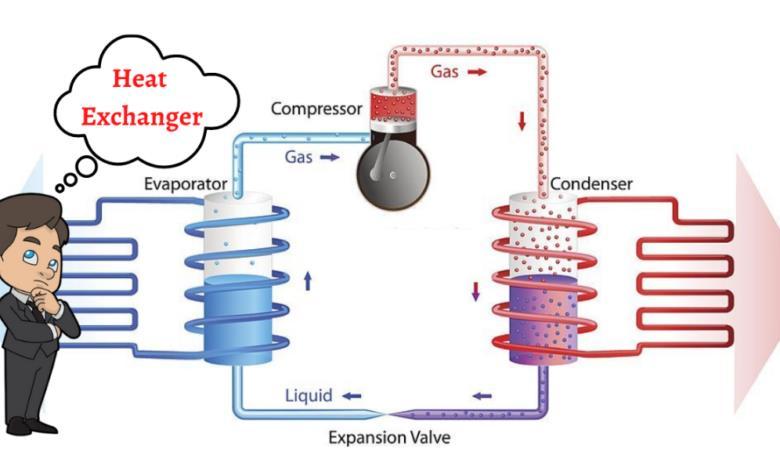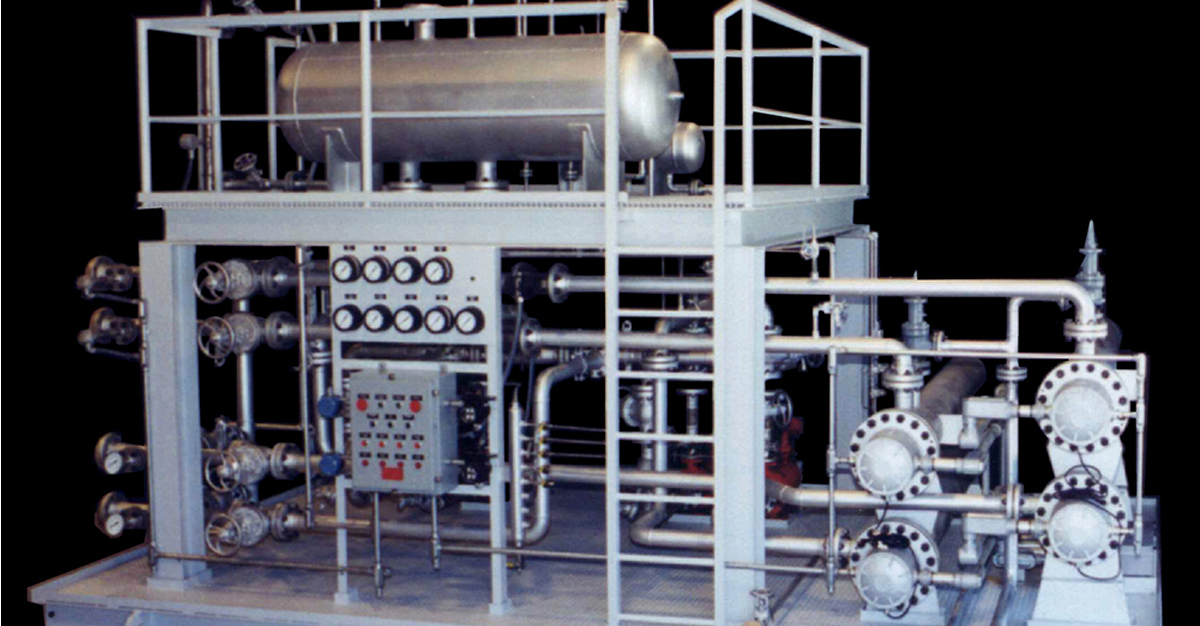Developments in Heat Transfer Solutions: What You Need to Know for Optimal Efficiency
Developments in Heat transfer systems are changing performance across various sectors. Advanced products like graphene and nanofluids assure significant improvements in thermal conductivity. Meanwhile, the integration of IoT and artificial intelligence supplies opportunities for real-time monitoring and enhanced power performance. The landscape of thermal management is quickly evolving. Understanding these advancements is essential for achieving ideal system performance and sustainability in the future. What certain improvements are forming this change?
Emerging Materials for Boosted Heat Transfer

Advanced Heat Exchanger Styles
While typical Heat exchangers have actually served their purpose in various applications, advanced designs are now emerging to fulfill the enhancing demands for efficiency and efficiency. These ingenious layouts, such as plate, shell-and-tube, and finned-tube Heat exchangers, integrate boosted area and enhanced circulation patterns to boost thermal transfer prices. Additionally, portable layouts permit for reduced space requirements without compromising effectiveness. Advanced products, such as compounds and corrosion-resistant alloys, furthermore improve sturdiness and performance under extreme conditions. Moreover, simulation innovations and computational fluid characteristics are significantly utilized to fine-tune these styles, making certain peak Heat transfer qualities. As industries seek to reduce energy consumption and maximize outcome, the fostering of innovative Heat exchanger designs is critical in attaining these goals.
The Role of Nanotechnology in Heat Transfer
Nanotechnology plays a vital role in boosting thermal conductivity within Heat transfer systems. By controling materials at the nanoscale, scientists have attained significant improvements in energy efficiency. These developments not just optimize efficiency but likewise add to even more sustainable energy solutions.
Enhanced Thermal Conductivity
Considerable advancements in thermal conductivity have arised via the application of nanotechnology, transforming Heat transfer systems throughout various industries. By incorporating nanoparticles into Heat transfer fluids and products, researchers have attained remarkable increases in thermal conductivity. These nanoparticles, such as carbon nanotubes, graphene, and steel oxides, boost the Heat transfer homes due to their high area and one-of-a-kind thermal characteristics. The resulting compounds show enhanced efficiency in applications varying from electronics cooling down systems to renewable power technologies. The ability to customize the size, form, and make-up of nanoparticles allows for optimized thermal management remedies. Because of this, nanotechnology continues to play an essential role in the development of more effective and reliable Heat transfer systems, paving the means for improved commercial applications.
Power Performance Improvements

Combination of IoT in Heat Transfer Equipments
The integration of IoT in Heat transfer systems introduces the execution of clever sensing units that enhance operational efficiency. These sensing units enable real-time data surveillance, permitting instant modifications and optimizations. This technical improvement has the potential to considerably enhance performance and energy monitoring in Heat transfer applications.
Smart Sensors Implementation
As Heat transfer systems evolve, the integration of clever sensors through the Internet of Points (IoT) has emerged as a transformative strategy. These sensing units allow real-time monitoring of temperature level, pressure, and circulation prices, enhancing system efficiency and dependability. By check out this site collecting and transferring data, they facilitate aggressive maintenance, minimizing the threat of system failings. Additionally, wise sensing units add to power savings by refining operational criteria based upon environmental problems. Their capability to evaluate anomalies and patterns enables educated decision-making, guaranteeing peak efficiency of Heat transfer systems. As markets increasingly adopt this innovation, the implementation of wise sensing units stands to reinvent just how Heat transfer systems are managed, paving the method for higher sustainability and enhanced efficiency end results.
Real-Time Information Tracking
Exactly how can real-time information keeping an eye on improve the effectiveness of Heat transfer systems? By integrating Internet of Things (IoT) technology, Heat transfer systems can take advantage of constant information collection from smart sensing units. This real-time monitoring permits immediate analysis of stress, temperature level, and flow prices, making it possible for drivers to identify inadequacies immediately. Subsequently, modifications can be made to maximize efficiency, minimize power usage, and expand tools life-span. In addition, predictive maintenance can be carried out, minimizing unanticipated downtime and costly fixings. The capability to visualize efficiency metrics through dashboards boosts decision-making, cultivating an aggressive strategy to system management. Eventually, real-time data keeping an eye on not only improves operational effectiveness yet additionally adds to sustainability goals within industrial processes.
Energy Performance and Sustainability Trends
Energy performance and sustainability fads are improving the landscape of Heat transfer systems, driving innovation and conformity across numerous sectors. Organizations are increasingly focusing on energy-efficient designs to reduce functional costs and lessen environmental influences. The combination of renewable resource resources is becoming much more common, allowing Heat transfer systems to operate sustainably while meeting regulative demands. In addition, developments in materials and modern technologies advertise reduced power intake and enhance overall efficiency. Lifecycle assessments are likewise acquiring traction, allowing firms to assess the environmental effect of Heat transfer systems from manufacturing to disposal. This concentrate on sustainability not just sustains corporate duty but likewise positions companies competitively in a market where consumers significantly favor environmentally friendly options. As a result, power efficiency and sustainability stay essential factors to consider for future developments in Heat transfer innovation.
Advancements in Thermal Monitoring Solutions
While the demand for reliable Heat transfer continues to increase, innovations in thermal management services are arising to deal with both performance and sustainability challenges. Advanced materials, such as phase change products and nanofluids, are being developed to enhance Heat transfer effectiveness - DVS Heat Transfer Systems. These materials boost thermal conductivity and enable much better temperature level regulation in various applications. In addition, innovations like energetic thermal his comment is here control systems are gaining traction, allowing real-time changes to take care of Heat circulation properly. These systems add to power savings and decrease the environmental effect of thermal procedures. The integration of IoT in thermal management helps with monitoring and anticipating upkeep, guaranteeing optimized efficiency and longevity of Heat transfer systems. Overall, these innovations stand for substantial strides toward more lasting thermal management methods
Future Directions in Heat Transfer Technology
Arising advancements in thermal monitoring services indicate an appealing future for Heat transfer technology. Scientists are progressively concentrating on establishing materials with superior thermal conductivity and improved power effectiveness. Developments such as nanofluids, which contain put on hold nanoparticles, supply considerable renovations in Heat transfer efficiency. Furthermore, the integration of wise products that adapt to differing temperature level problems is gaining traction, permitting even more receptive and reliable systems. The rise of additive manufacturing techniques is also allowing the style of intricate Heat exchanger geometries that optimize fluid circulation. The application of equipment learning formulas is expected to reinvent the optimization of Heat transfer systems, promoting predictive maintenance and efficiency improvement. Jointly, these improvements are poised to transform the landscape of Heat transfer innovations in numerous markets.

Often Asked Questions

Just how Do I Select the Right Heat Transfer System for My Application?
Picking the right Heat transfer system involves reviewing application requirements, consisting of temperature level varieties, fluid residential properties, and performance requirements. Examining system kinds, upkeep considerations, and cost-effectiveness also plays a crucial function in making a notified decision.
What Are the Maintenance Needs for Advanced Heat Exchangers?
Upkeep demands for innovative Heat exchangers typically include regular inspections, keeping an eye on for leakages, cleaning of surfaces, and guaranteeing optimal circulation prices. Complying with manufacturer guidelines warranties reliable operation and extends the tools's lifespan.
Just How Do Environmental Elements Impact Heat Transfer Performance?
Environmental factors substantially affect Heat transfer efficiency. Variations in humidity, air movement, and temperature effect thermal conductivity and convective Heat transfer, ultimately impacting system performance and necessitating factor to consider throughout the design and operation of Heat transfer systems.
What Safety And Security Standards Apply to Heat Transfer Equipments?
Security criteria for Heat transfer systems generally include guidelines from organizations such as ASME and ASTM. DVS Heat Transfer Systems. These requirements address products, style, and operational methods to ensure integrity, performance, and protection against risks in various applications
Just How Can I Fix Typical Heat Transfer System Issues?
Repairing typical Heat transfer system problems includes looking for leaks, guaranteeing proper fluid circulation, evaluating insulation honesty, and confirming temperature level differentials. Identifying these elements can assist preserve system performance and stop further complications.
Nanotechnology plays an important duty in improving thermal conductivity within Heat transfer systems. Considerable developments in thermal conductivity have emerged via the application of nanotechnology, revolutionizing Heat transfer systems throughout numerous markets. Advancements in sites thermal conductivity through nanotechnology have actually led the method for impressive enhancements in power performance within Heat transfer systems. Energy performance and sustainability fads are improving the landscape of Heat transfer systems, driving innovation and conformity throughout various industries. The integration of IoT in thermal management helps with surveillance and anticipating maintenance, making sure enhanced efficiency and durability of Heat transfer systems.